There are ticks living on all seven continents, and you can find ticks in all 50 states of the US, including Ohio. With such a wide distribution, it’s tempting to think that ticks have some means of self-transport, but they don’t.
Ticks can’t jump, run, or even see. Instead, they rely on birds to unknowingly carry them to new homes. In turn, ticks are often eaten by birds, as well as nematodes, mites, opossums, and guineafowl. But, the ticks in Ohio aren’t just along for the ride; they’re constantly on the hunt for fresh blood to gorge themselves on.
It’s so important to understand what kinds of ticks live in your state and what diseases and infections they’re capable of spreading. Here, we’ll learn about all the ticks in Ohio you need to be worried about and what you can do to prevent tick bites.
Read on to learn more about Ohio’s ticks!
List of Ticks in Ohio
American Dog Tick
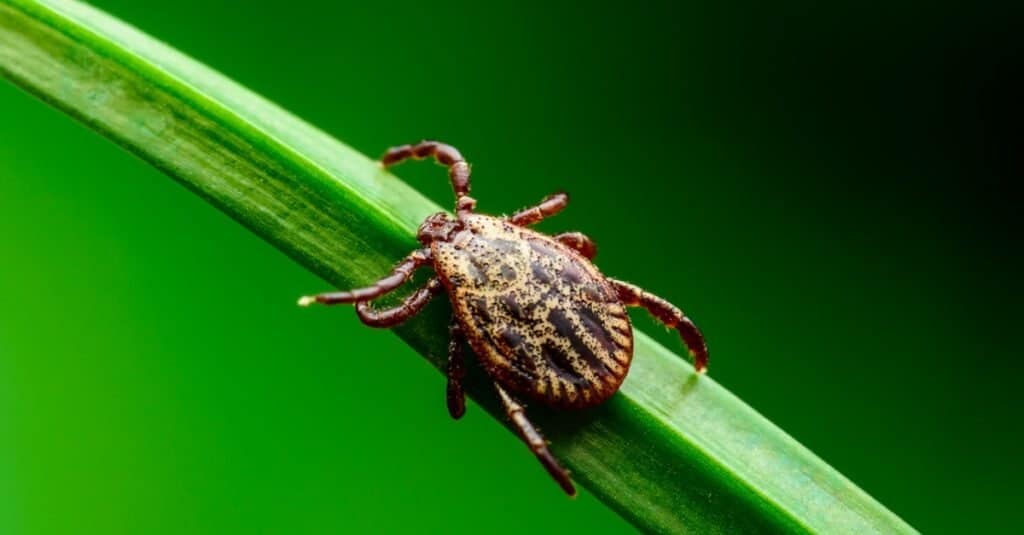
The American dog tick is one of two types of dog tick in Ohio.
©iStock.com/nechaev-kon
American dog ticks live in open fields rather than forests, though they’re sometimes called wood ticks. They’re the primary vectors for Rocky Mountain spotted fever, which they transmit to people and dogs through their bites. American dog ticks in Ohio frequently bite people, especially if they’re hiking or walking paths with foliage or tall grass on either side.
The American dog tick is the largest tick in Ohio. Both males and females have red-brown legs with red-brown bodies. The males have mottled tan and brown abdomens, while females have distinct, tan scuta (a hard shield that presents as a smaller circle towards the head).
Winter Tick
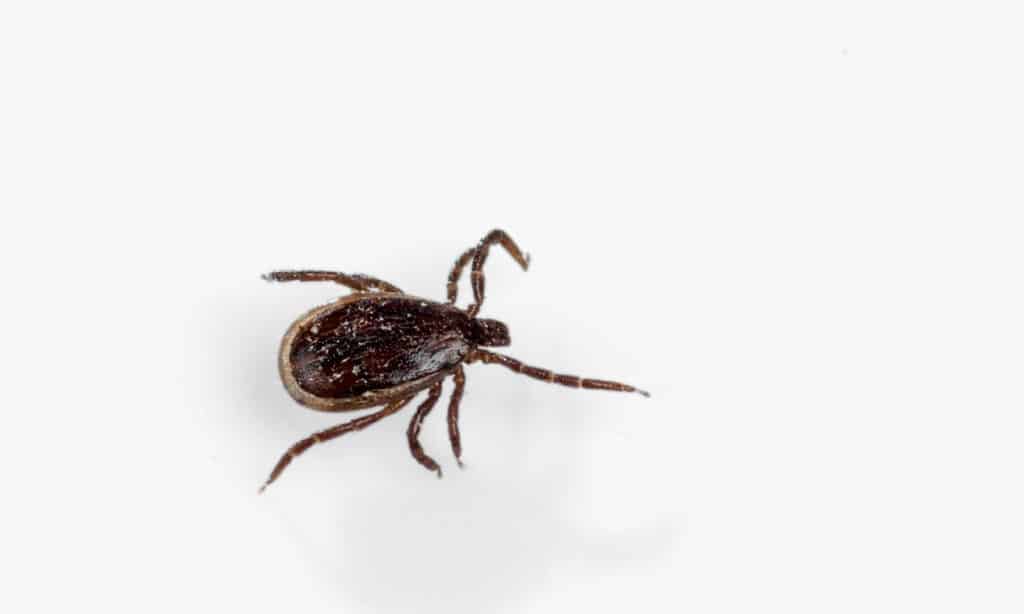
The winter tick is most common in the fall and winter.
©iStock.com/VladK213
Winter ticks, commonly known as moose ticks, are highly unlikely to bite humans. Instead, they feast on the blood of larger animals like moose, elk, deer, cattle, and horses. These ticks are unique among the ticks of Ohio in that they remain active in the fall and winter rather than the spring and summer.
Winter ticks are red-brown, with narrow, long bodies and small mouthparts. They live throughout all of North America, as far south as Mexico. They’re most often encountered by hunters when they take game animals. Winter ticks can famously kill a moose simply by overpowering it with the sheer size of their infestation. Moose have been found with up to 70,000 winter ticks embedded in them.
Deer Tick
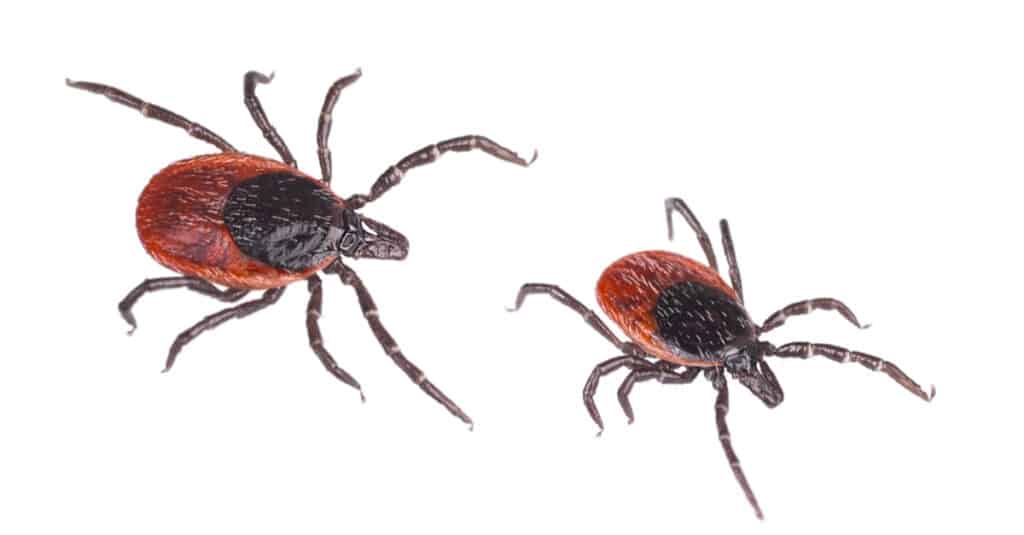
Deer ticks are common in woodlands and the edge zones between forests and open fields.
©KPixMining/Shutterstock.com
Deer ticks, also known as black-legged ticks, are the only ticks in Ohio with black legs. Males have red-brown bodies, while females have nearly orange bodies and black scuta. Deer ticks can be found anywhere there are sufficient host animals, like white-tailed deer, available. When they’re larval or nymph aged, deer ticks feed on mice, rats, squirrels, and other small mammals.
Unfortunately, these ticks pick up the bacteria responsible for Lyme disease when they feed on mice. As adults, they are then capable of transmitting this bacterial infection to humans and even dogs. The peak season for deer ticks is from early spring to early fall.
Brown Dog Tick
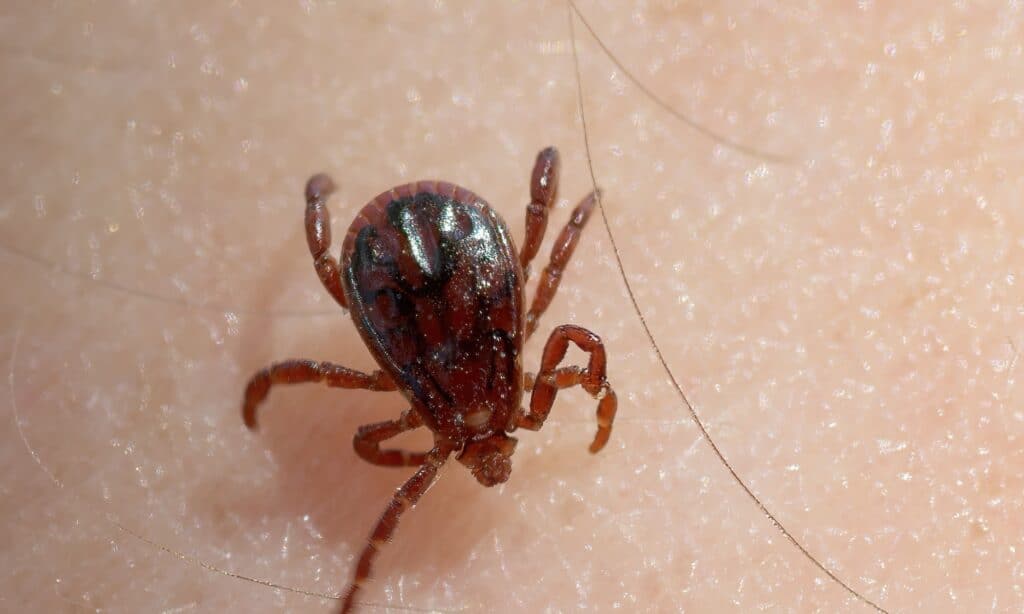
Unlike other ticks, the brown dog tick can survive just about anywhere there are human structures to live in and dogs to feed on.
©iStock.com/RobertAx
Brown dog ticks are one of two species of dog tick in Ohio. They spend their lives largely indoors, where they feed almost exclusively on dogs. These ticks have narrow, medium brown bodies with little sexual dimorphism. They’re capable of spreading Rocky Mountain spotted fever to humans, though bites to humans are rare. They also carry several canine-specific pathogens.
When is Tick Season in Ohio?
Adult ticks in Ohio are most active in the spring and fall, with winter ticks remaining active through the winter. Nymph-aged ticks are most active in the early spring and summer, while the larvae come out in late summer. Ticks of any age can bite a human, and both nymph and adult ticks are capable of spreading Lyme disease.
Do Ticks in Ohio have Lyme Disease?
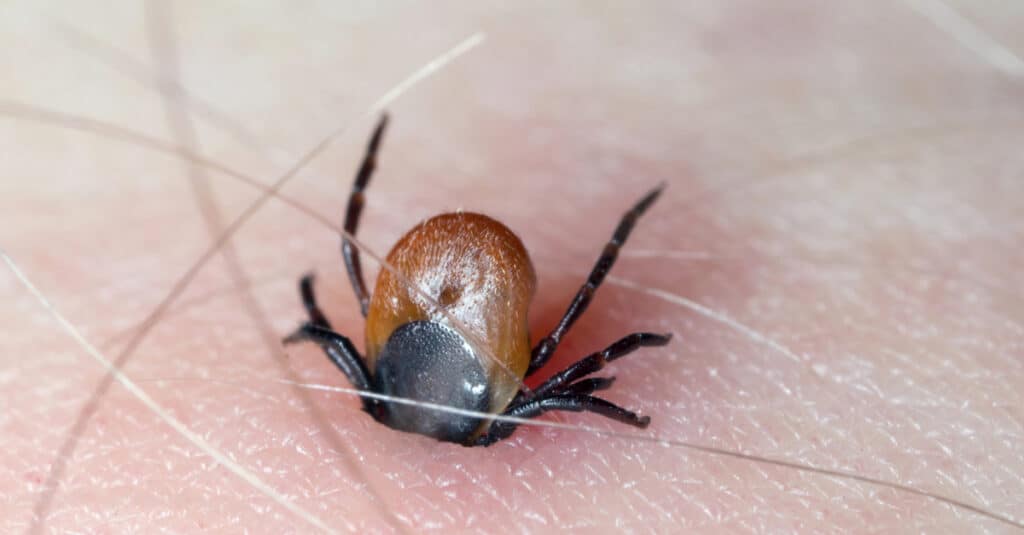
In Ohio, only the deer tick carries Lyme disease.
©Tomasz Klejdysz/Shutterstock.com
Fortunately, there is only one species of tick in Ohio that carries Lyme disease, and that’s the deer tick. Deer ticks commonly bite people, especially in the spring and summer. If you suspect that you’ve been bitten by a deer tick, be sure to save the tick once you’ve killed it. Then, send it off to a tick lab for testing to determine whether or not it carried Lyme disease. Then, monitor yourself for signs of infection.
Where Do Ticks Live in Ohio?
Ticks in Ohio can be found everywhere, from woodlands and fields to your backyard. They’re particularly prevalent in the leaf detritus of forest floors and thick foliage.
How to Avoid Ticks in Ohio
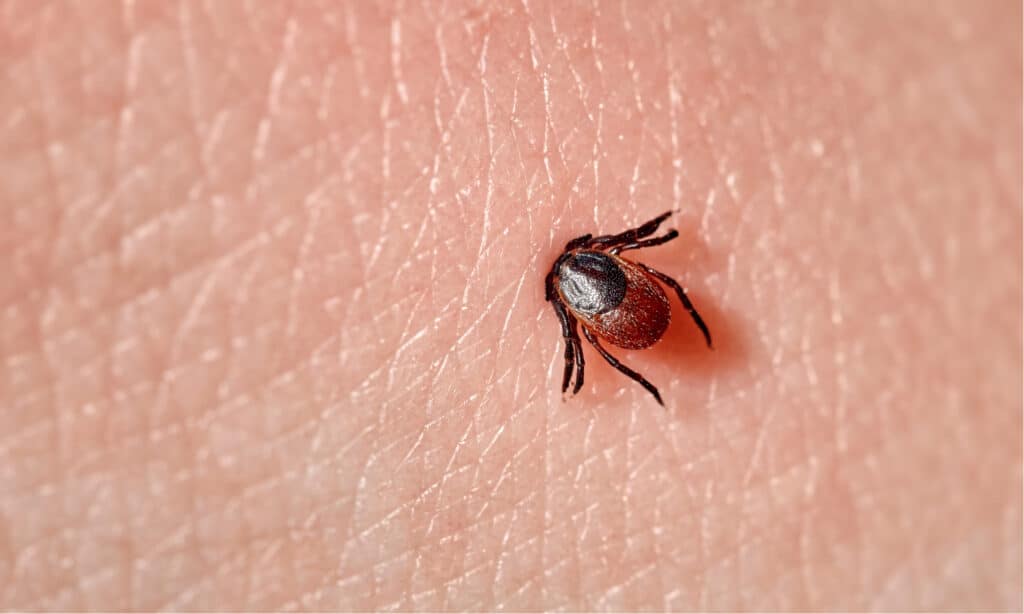
If you find a tick embedded in you or your dog, remove it as soon as possible using tweezers or a tick removal tool.
©Evgeniyqw/Shutterstock.com
Avoiding ticks in Ohio is the first and best step in preventing tick bites. If you’re planning any outdoor activities, be sure to wear long pants and a long-sleeved shirt. In particularly dense areas, tuck your shirt into your pants and your pants into your socks. This gives the tick no way to reach your skin. Additionally, light-colored clothing works best for spotting any ticks crawling on you.
The photo featured at the top of this post is © Melinda Fawver/Shutterstock.com
Thank you for reading! Have some feedback for us? Contact the AZ Animals editorial team.






